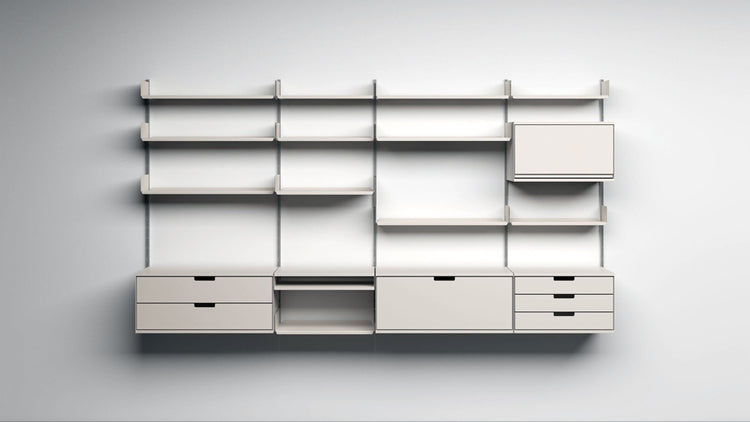
Shelving system designed by Dieter Rams / 1960
Dieter Rams, a legendary industrial designer, compiled a list of principles that he followed in his work. Being fans of his, we've kept them in mind while going through the process of designing our first book. Here's how they relate.
4. Good Design Makes a Product Understandable
This may be obvious, but it isn't always followed: when you look at a usable item it should be apparent what it is and how it works. No fumbling around, no turning it over like a mysterious artifact from the past (or future). What you see is what you get. And when you see a Baron Fig book you know what you're getting, inside and out.
5. Good Design is Unobtrusive
Another way of saying this is "Good Design is Invisible." We've worked hard to get out of your way. The books aren't covered in branding (the cover is completely blank) and inside we've included the absolute minimum necessary tools: a bookmark for keeping your page and a box on the inside endpaper where you can write your name, subject, date, or anything else you desire. As we worked on the book we had a little anthem going: "This is your book, not ours."
6. Good Design is Honest
Communicating effectively via a website is a difficult thing to accomplish, and we're still learning how best to go about it. For starters, we've outlined our process the entire step of the way via the FAQ, status updates, blog posts, and social media. This includes letting you know that we started with our own experiences, turned to hundreds of thinkers around the world with one simple question ("What do you like in a sketchbook or notebook? "), and will continue to keep an open dialog to perpetually refine our products. If you have any suggestions, feel free to send us feedback—we love hearing from people who are passionate about sketchbooks, notebooks, and all the things you can do with them.
